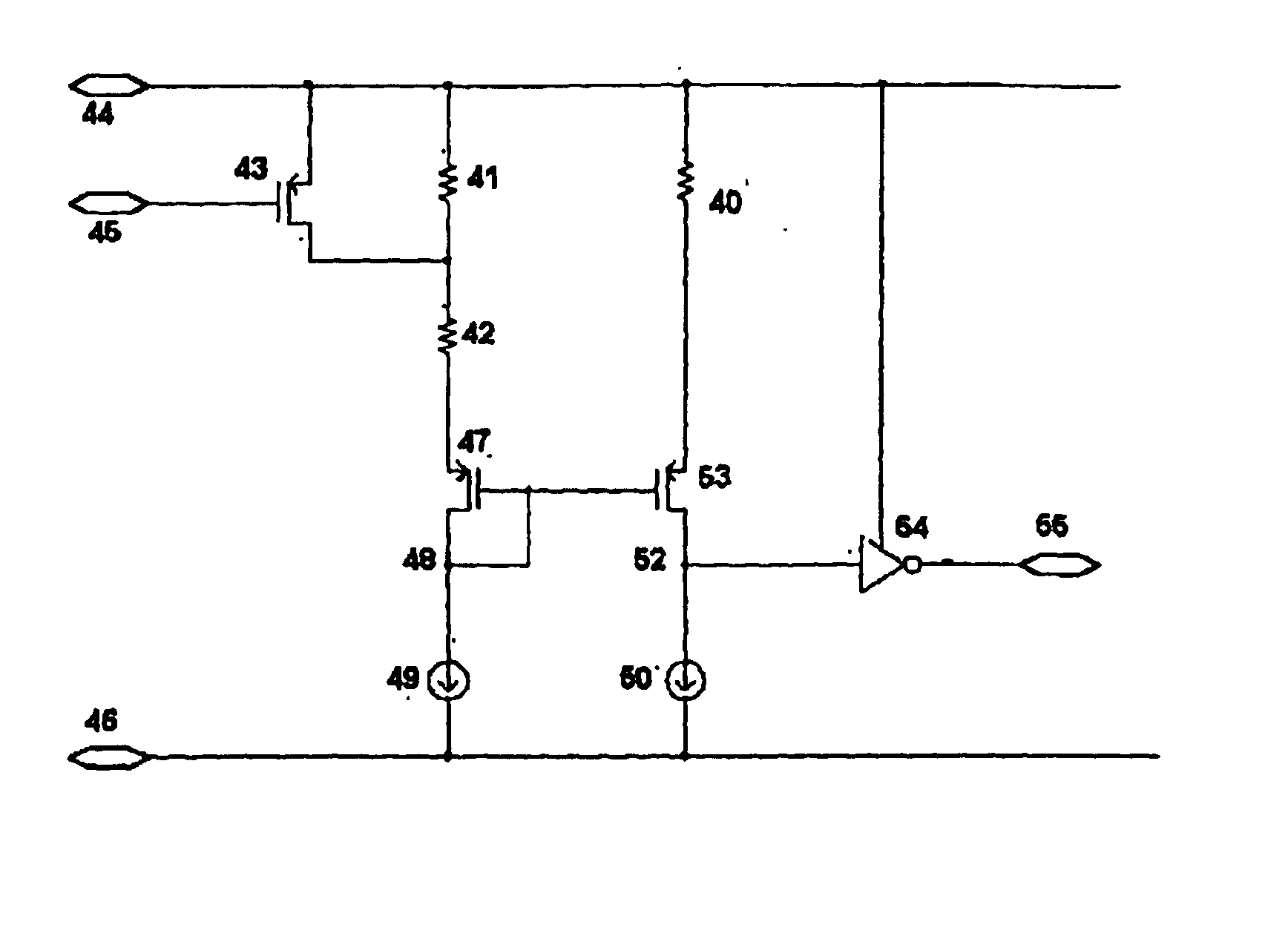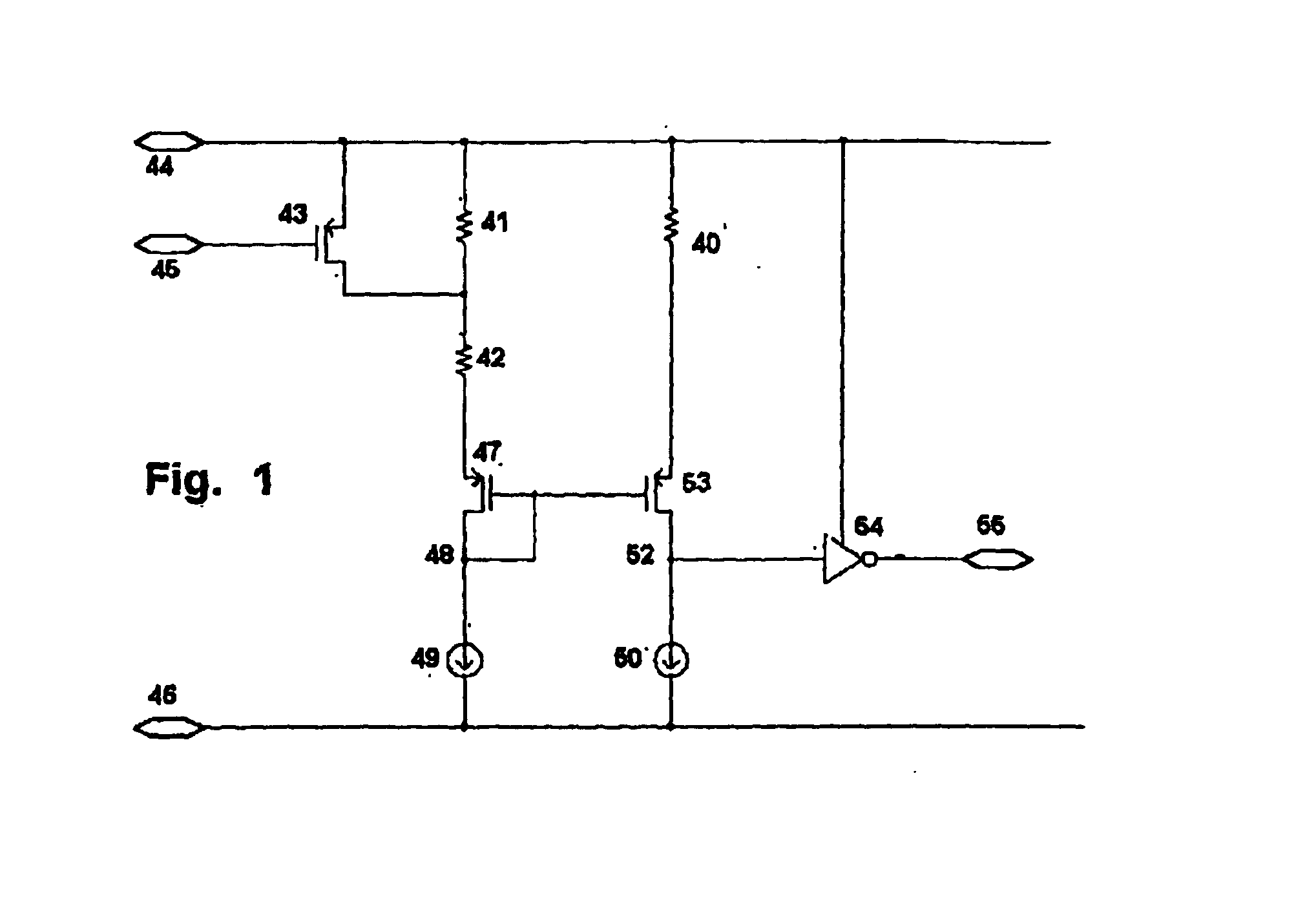Method and apparatus for improving the reliability of the reading of integrated circuit fuses
- Summary
- Abstract
- Description
- Claims
- Application Information
AI Technical Summary
Benefits of technology
Problems solved by technology
Method used
Image
Examples
first embodiment
[0030]In a first embodiment, a first constant-current reference 49 is connected in series with first and second resistors 42, 41 with a first MOSFET transistor 47 with source and drain between the first constant-current reference 49 and the first and second resistors 42, 41, a connection between the first constant-current reference 49 and the first MOSFET transistor 47 defining a first node 48. In addition, a second constant-current reference 50 is connected in series with the fuse 40 with a second MOSFET transistor 53 with source and drain between the second constant-current reference 50 and the fuse 40, a connection between the second constant-current reference 50 and the second MOSFET transistor 53 defining a second node 52. A switch 43 is in parallel with the second resistor 41. The gates of the first and second MOSFET transistors 47, 53 are connected together and to the first node 48. In this embodiment the first resistor 42 defines the first reference resistance, and the serie...
second embodiment
[0031]In a second embodiment, the series-wise combination of the first and second resistors is connected to the negative supply voltage, and the is fuse also connected to the negative supply voltage. The first constant-current reference is a current source also connected to the positive supply voltage. The second constant-current reference is a current source also connected to the positive supply voltage. The MOSFET transistors are NMOS.
third embodiment
[0032]In a third embodiment, a first constant-current reference is connected in series with the first and second resistors, and a connection between the first constant-current reference and the first and second resistors defines a first node. A second constant-current reference is connected in series with the fuse, and a connection between the second constant-current reference and the fuse defines a second node. The first resistor defines the first reference resistance, and the series-wise combination of the first and second resistors defining the second reference resistance. A comparator receiving as inputs signals from the first and second nodes, and its output defines an output of the apparatus.
PUM
 Login to View More
Login to View More Abstract
Description
Claims
Application Information
 Login to View More
Login to View More - R&D
- Intellectual Property
- Life Sciences
- Materials
- Tech Scout
- Unparalleled Data Quality
- Higher Quality Content
- 60% Fewer Hallucinations
Browse by: Latest US Patents, China's latest patents, Technical Efficacy Thesaurus, Application Domain, Technology Topic, Popular Technical Reports.
© 2025 PatSnap. All rights reserved.Legal|Privacy policy|Modern Slavery Act Transparency Statement|Sitemap|About US| Contact US: help@patsnap.com


